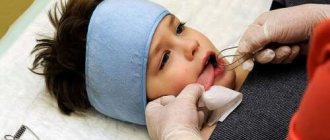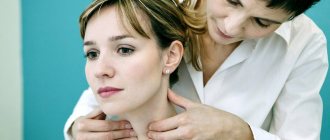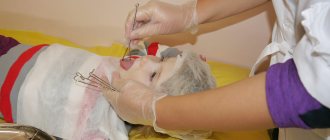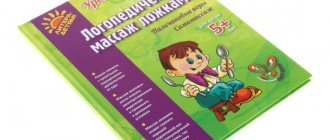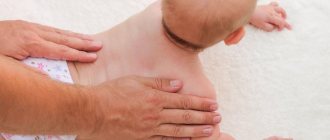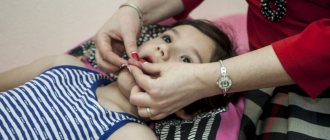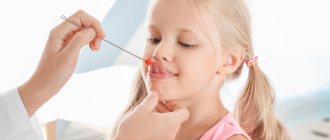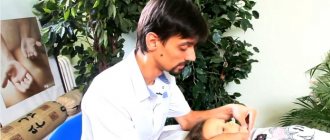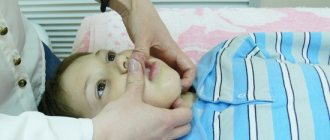Price list Doctors clinic
Speech therapy massage is a method of restoring normal speech function, which is widely used as part of an integrated approach. It allows you to speed up the process of correcting speech defects and get impressive results in a short time. There are no age restrictions for the use of such a massage; it can be recommended by a pediatrician or prescribed by a speech therapist. Massage is provided as part of an appointment with a speech therapist.
This method can effectively complement articulation, breathing exercises, and other methods of stimulating the development of normal speech.
Indications for speech therapy massage
The speech therapist selects a type of massage aimed at activating inactive areas of the verbal apparatus. This allows you to gradually restore tone to all muscles responsible for speech function. The technique can be used for dysarthria, rhinolalia, dyslalia, and so on.
Manipulations can be carried out from two months, although at an early age they are done only for prevention. For serious disorders, massage is used to restore vocal capabilities, tone the muscles of the speech system and reduce the time it takes to develop pronunciation. The method can correct even significant neurological symptoms.
Impact on important speech centers - lips, tongue, earlobes and neck, is indicated for children with the following problems:
- partial loss or incomplete voice disorder;
- treat various defects;
- excessive intensity of the facial muscles;
- excessive reflexive drooling;
- failure of the pronunciation system of speech as a whole;
- cerebral palsy;
- violations of the formation of articulatory muscles;
- all types of speechopathy.
All these disorders can lead to serious speech impediments in the future, and to prevent this, measures must be taken as early as possible.
Speech therapy massage has contraindications. These include colds and respiratory pathologies, stomatitis, enlarged lymph nodes, inflammation of the mucous membranes of the eyes and gums, and herpes. With autism, cerebral palsy, seizures, and Down syndrome, special caution is needed.
Order of conduct
There are two types of speech therapy massage. The first involves working only with your fingers, the second involves the use of special tools. A doctor can prescribe one or another type of massage for certain indications.
The procedure includes a combination of techniques:
- respiratory correction;
- massaging the facial muscles;
- neck muscle massage;
- massaging speech structures (tongue, inner surface of cheeks, lips) using a probe.
Manual or manual massage consists of stroking, pinching, and rubbing. In some cases, the doctor uses auxiliary instruments - a pacifier, a spatula, a toothbrush. The specialist’s actions are aimed at kneading the muscles and improving the blood supply to the tissues. Manual massage also includes acupressure, in which the master influences reflex zones.
Children's speech therapy massage using a probe was developed by speech therapist E. V. Novikova. This technique involves influencing areas of the speech apparatus using 9 different types of probe. The choice of a specific tool takes into account the problem area, as well as the severity of the speech disorder. Different shaped probes are designed to produce different effects.
Benefits and goals of speech therapy massage
The main goals of massage are as follows:
- achieving accurate articulation of sounds;
- improvement of the condition of the vocal cords;
- normalization of respiration during speech;
- prevention of psychological stress due to speech defects;
- general improvement in the quality of speech and the functioning of the speech apparatus.
Massage helps to normalize the muscle tone of the general, articulatory and facial muscles, reduces the manifestation of paralysis and paresis of these muscles, and reduces pathological movements of the speech muscles. Sometimes the procedure is performed to eliminate excessive salivation in children, which also interferes with normal diction.
Advantages of visiting the Family Doctor clinic
The advantage of speech therapy massage as part of a specialist appointment is its affordable price, which makes this procedure in demand in many cases of speech defects. We offer our patients quality care.
- Comprehensive diagnostics: accurate assessment of the state of the muscles of the speech apparatus, determination of the general state of health, speech disorders, etc.
- Team approach: combining advanced techniques and correction techniques to achieve the desired result.
- Professionalism of doctors: consultations are conducted by specialists with many years of experience.
To make an appointment at a time convenient for you, call the single contact center in Moscow, fill out the online appointment form or contact the clinic reception.
leave feedback
Main types of massage
Speech therapy massage has several main types:
Classical. Involves the usual massage techniques: stroking, kneading, rubbing and vibration. Used to activate and stimulate muscle tone.
- Spot. It is aimed at biologically active points where blood vessels and nerve endings accumulate.
- Hardware. Vacuum or vibration devices are used.
There is probe massage and self-massage. The child does the last one himself, massaging his face and tongue.
Probe massage is performed according to the method of E.V. Novikova. It helps to normalize speech breathing, correct the pronunciation of sounds, increase vocal strength and further normalize the functioning of the nervous system. It is carried out by a specialist. The sequence of using different probes to the required areas is determined individually.
What to do if a child speaks poorly at 6 years old?
Typically, sessions are carried out over a course of 2-3 weeks. A repeat course is possible after 1.5-2 months. The technique is contraindicated for children under six months of age.
How to know when it's time to seek help
You should not hire a speech therapist for a one-year-old child who is not yet physically formed to pronounce sounds correctly. But you shouldn’t delay asking for help. By first grade, your child should already be able to communicate freely.
If you have doubts about the advisability of logomassage, you should focus on the following criteria.
You need to seek help if your child is over 5 years old, but his speech is unclear and it is difficult for others to understand the essence of the appeal.
When reading or trying to retell long stories, the baby stutters, repeats the same words, and lengthens sounds.
We should be wary of trends towards simplifying phrases. For example, instead of saying: “Mom, I want to wear green pants, not red,” the child begins to become hysterical, shouting: “Mom, I don’t want to.” The help of a speech therapist is definitely needed if speech problems prevent the child from establishing first social connections with peers.
The child may have the ability to read aloud and demonstrate excellent pronunciation in the family circle. But if the child withdraws in public, then it is worth “rehearsing” the process of communication with a specialist.
A clear indication for seeking professional help will be diagnosed diseases, including:
- Down syndrome;
- autism;
- hearing loss.
In such cases, you should not wait for a certain age. Tongue massage is necessary for a child to develop speech. Additionally, you can consult with a speech pathology specialist. Your doctor will help you develop a home exercise program.
Many complex conditions require the participation of other specialists, for example, a psychologist works with children with cerebral palsy.
Specifics of massage at home
When performing a massage at home, the child should be comfortable. He should not feel anxious; it is important to find an approach to him and distract him with something. Sessions are performed for small children while they are in a stroller or in their mother’s arms. Older children can sit on their back with a small pillow or bolster under their neck or in a chair with a headrest.
Over time, children get used to manipulations and perceive them calmly.
The procedure can be carried out no earlier than two hours after eating. First you need to rinse your child's mouth thoroughly.
Alternatives to logomassage
Speech therapist services are not that expensive. But parents whose child does not show positive results begin to look for alternatives to the procedure.
One option is neurofeedback or bioacoustic correction.
During the procedure, sensors are attached to a person's scalp to record brain wave activity. The doctor will be able to record the graph of brain activity during communication. The child is then fitted with headphones through which the “voiced” brain signals can be heard. This treatment is prescribed to children with severe speech delays.
Music therapy is more suitable for young patients without mental retardation. The baby is encouraged to listen to rhythmic songs and sing along to them.
Pre-warm-up
You need to start the session with a general facial massage for a few minutes. You need to perform pleasant stroking and vibrating manipulations for the baby. Directions may be different:
- The forehead is massaged from bottom to top and from the center to the temples.
- The lower eyelid needs to be worked from the outer edge to the inner, the upper - vice versa.
- Movements are performed from the nose to the temples and from the edges of the lips to the ears.
- Manipulations are also done from the chin to the earlobes.
To relax the muscles of the neck and root of the tongue, the baby's head sways and smoothly turns to the sides. Then the work on the tongue and lips begins.
Advantages and disadvantages of the technique
Probe massage allows you to speed up the production of sounds, facilitate the assimilation of articulatory gymnastics, and improve muscle function. Without it, correction of dysarthria will take 5-10 years.
It does not require special conditions, since it can be done by any speech therapist with the appropriate qualifications. In many correctional institutions, it is carried out by specialists as needed.
Massage helps relieve tone, hypersalivation, and improve fine motor skills.
It also has disadvantages. The significance and value of massage is overestimated - it is an auxiliary tool, not a panacea. Low-qualified speech therapists provide probe massage as a cure for all problems. In fact, the impact only provides the basis for producing sounds, which does not cancel the remaining stages of the work.
If used incorrectly, tools cause negativity in the child, since if they are not understood, they can cause serious harm. Some specialists act rudely and incorrectly, which leads to pain and the child’s refusal to study.
Massage technique
The massage begins with treating the facial muscles, then others are worked on. Classic techniques with a gradual increase in pressure are used. In this case, discomfort in the child is not allowed. Stroking movements of the forehead and rubbing of the cheeks can be performed. At the end, light tapping and pinching movements are made. The lips are kneaded from the middle to the edges, each lip separately, then move on to the nasolabial fold.
If we are talking about increased muscle arousal, a relaxation technique is used. It includes classic strokes and vibrations. The session begins with the collar and shoulder areas, then the face, lips, and tongue are worked on. Finish the relaxation with smooth, slightly pressing movements, which are repeated 8-10 times.
Special devices are used to massage the tongue. At home, a spoon or index finger can be used. When using a spoon, the necessary areas are stroked and rubbed with its convex side.
To overcome excessive drooling, you need to teach your child to chew properly, first with his head thrown back. He should also learn to suck up saliva and swallow it more often with one push. Another effective exercise is rotating the tongue in the mouth followed by swallowing saliva.
Parents must be patient and work with their baby regularly. The time of sessions is determined by the degree of impairment and the age of the child. It should not exceed 25 minutes, regardless of whether the massage is performed at home or in a medical facility. The first sessions last five minutes, and over time their duration increases.
The course usually includes 10-20 sessions. Massage can be performed daily or at intervals every other day.
I. The benefits of logomassage for children
Logomassage has an excellent effect on the speech apparatus. Special techniques allow you to change the condition of muscles, nerve fibers, skin, and blood vessels so that the child begins to pronounce words better.
Advantages of logomassage
Performing fairly simple movements can improve the situation with delayed speech development. Here's what regular sessions lead to:
- the tone of the muscles that are responsible for facial expressions and articulation is normalized;
- pathological and random muscle movements are reduced;
- the force of contraction of the muscles of the speech apparatus is activated and increased;
- articulation improves, pronunciation becomes clearer, faster, and more voluminous.
Logomassage has a positive effect on the child’s entire nervous system and improves health indicators. For example, massage has a stimulating effect on blood circulation, improves metabolism, saturates the blood with oxygen, and promotes cellular nutrition. This procedure makes the muscles more elastic and strong, and also speeds up recovery after exercise and improves performance.
A few weeks are enough to improve the tone of the articulation organs and engage sedentary muscles. Speech therapy massage can form the coordination of movements of the speech organs from scratch, as well as expand their range.
Indications and contraindications
Massage can be effectively used for diseases such as dysarthria, dyslalia, alalia, aphasia, etc., as well as for various speech defects, delayed development of the speech apparatus and impaired muscle tone.
The procedure has its own contraindications:
- infectious diseases;
- skin diseases;
- problems with the mucous membrane of the eyes;
- enlarged lymph nodes.
The procedure cannot be carried out if the child is afraid. If the baby cannot be calmed, the session should be postponed.
Let's now figure out what types of logomassage exist in general and look at specific techniques.
Tongue massage for speech correction
The session is carried out after removing food debris from the mouth, 1.5-2 hours after eating or 2 hours before feeding. Stroking movements of the tongue are made in all directions - this helps to activate the maximum number of muscles.
The massage is done in the following sequence:
- Working on the longitudinal muscle from the base to the tip of the tongue.
- Stimulation of the transverse muscle from the center to the edges.
- Circular and spiral movements over the entire area.
- Patting the entire plane of the tongue.
- Pressing longitudinal muscles.
- Massage the frenulum from top to bottom.
- Using a cloth, make rubbing movements.
This technique can also be used at home.
Acupressure for dysarthria
To restore speech function in patients with dysarthria, reflexologists use acupressure massage. It is combined with motor exercises and self-massage for dysarthria, since active motor exercises increase the patient’s chances of recovery. The main principle of treatment using acupressure is to restore patency and activate the activity of meridians, normalize the circulation of energy and blood.
To treat dysarthria and contracture of the tongue muscles, reflexologists use a tonic acupressure technique. Affects the following points:
- The junction of the posteromedial and external calcaneal meridian is located on the border of hair growth in the soft part of the occipital recess;
- Conjugation of the anteromedian meridian and the internal supporting meridian" - located under the chin, at the elevation of the protrusion of the larynx, under the base of the tongue (on the upper edge of the thyroid cartilage;
- Located in the recess between the tendons of the flexor carpi ulnaris and flexor digitorum (to determine the location of this point, the patient is asked to clench the hand into a fist and bend it to the forearm).
The patient can also perform acupressure massage independently. The first sessions should be carried out under the supervision of a reflexologist.
Articulation and breathing exercises
To increase the effectiveness of speech therapy massage, it is supplemented with articulation and breathing exercises. It is recommended to perform it in front of a mirror. Usually the child repeats the movement after the speech therapist or parent. Such gymnastics may include the following exercises:
- Maximum tongue extension.
- Pull the tongue towards the nose and chin.
- Rocking and abduction of the tongue.
- Lips like a tube.
- Stretching, raising, lowering lips.
- Pursing and licking lips.
Breathing exercises are usually carried out in a playful way. It is useful for kids to blow soap bubbles or balloons. In this case, speech correction should be accompanied by tongue twisters. Constantly learning them will teach the child to cope with sounds that are difficult for him and will help him master the tempo-rhythms of speech.
Probe kit
Speech therapy probes for producing sounds (authored by Rau) are not suitable for massage. A special set was developed by E. V. Novikova. It includes 8 main probes plus 4 additional ones. A patent for the development was received in 2000.
Probes are used to work with articulatory organs and the forearm. Stimulating the muscles of the dominant hand improves motor skills and promotes handwriting development.
The first tool is a fork , which looks like two blunt needles slightly apart to the side. A slight tingling sensation has an activating effect.
The second instrument is the eight . At the end there is a round loop that “grinds” the muscles.
The third, fourth, fifth tools are “sleighs” of different sizes. The shape of the probes resembles the rounded runners of a sled, hence the name. You can work with either side of the tool.
The sixth tool is a hatchet , which looks like two tightly pressed loops. Used for pressing on the surface of organs, sliding. Normalizes tone and increases muscle mobility.
The seventh is a cross, the loops are rounded and intersecting . It is used to stimulate the muscles of the tongue and develop its elevation.
The eighth tool is a pusher , a small loop raised at a right angle to the probe handle. Allows you to stimulate mobility and elasticity of muscles. When you press on the tongue, it creates tension; after the pressure is removed, the organ relaxes.
The ninth tool (additional) - tweezers , looks like two large rounded loops located parallel to each other. It is convenient to take the tongue with a probe and gently move it.
The tenth tool is a pull-up tool that looks like a low, wide frame. Used to stretch the frenulum.
The eleventh tool is a swan , a small loop, bent at the base, after which there is a small vertical section of the probe, which is bent at a right angle to the probe handle. Massages the palate, eliminates salivation.
The twelfth is sliding, looks like an elongated triangle with round corners. Used for sliding movements.
Some authors made their own adjustments to the set of massage probes. Vorobyova together with Krupenchuk created the author's set. It consists of 9 instruments. The creation of probes with different coils with small edges can be considered an innovation. This tingling sensation can effectively stimulate the nervous system.
Massage with spoons
The spoon massage method can be used at home. It significantly improves speech development in children. To perform the manipulation you need two pairs of teaspoons. The massage is performed as follows:
- The convex surface of the spoon is used to stroke the temporal area.
- The eye sockets are stroked in the same way. You need to move along the eyebrow to the outer border of the eye. Under the eye, the movements are carried out in the reverse order.
- Circular stroking of the cheeks is done.
- The temporal area is rubbed with a heap of a spoon in a spiral. At the end, you need to gently press on the treated area.
- Using spiral movements of a heaped spoon, rub the area between the eyebrows.
- Using the edge of a spoon, massage your cheeks from the chin to the eyes.
- Use the tip of the product to rub the nasolabial area.
- Lightly pressing the end of the spoon works on each lip separately.
- The area of the cheekbones and chin is kneaded with the round part of the spoon in a circular motion.
Speech therapy massage helps eliminate speech disorders in a child and ensure normal development of the speech apparatus. It must be performed regularly and using the correct technique.
Contraindications
It seems that speech therapy massage is such a lifesaver with absolute usefulness and a mandatory result. However, this is not quite true. Parents should know that only a specialist can prescribe this procedure. The speech therapist will check the condition of not only the child’s speech, but also the articulation apparatus. In addition, it is important to know your medical history and undergo an examination by a neurologist.
Speech therapy massage is not indicated in the following cases:
- Infectious and viral diseases.
- Pustular skin diseases.
- Increased body temperature in a child.
- Strict contraindication - episyndrome, history of epilepsy!
- Recent sore throat. Before starting a massage course, you must wait at least 7-10 days after recovery.
Article:
For children with severe speech disorders (alalia, minimal dysarthric disorders, a dysarthric component as a secondary disorder with lesions of the central nervous system, a neurotic form of stuttering, etc.), articulation and breathing exercises alone are not enough to correct sound pronunciation.
Speech therapy massage is required. Often, for the greatest effectiveness of speech therapy work, it is necessary that a child who needs the help of a speech therapist first undergo neurological treatment. The simultaneous work of two specialists is also very effective: speech therapy massage against the background of drug treatment proposed by a neurologist. The duration of speech therapy massage depends on the severity of the defect. In my practice, I always involve parents (usually mother or grandmother) in active participation in the correction of speech disorders. Namely, I conduct conversations for parents, explain what the main reason for the child’s difficulties is, what this may be connected with; I explain to parents the importance and necessity of speech therapy massage for the child; I conduct open individual classes and massage master classes for parents, and also teach my mother speech therapy massage at home. This experience has shown that the effectiveness of speech therapy increases several times compared to those children whose parents are not interested in active assistance from a speech therapist. In those children with whom I regularly performed speech therapy massage in a preschool setting, as well as by parents at home according to the scheme I proposed, sounds were evoked and automated much faster.
Practice has shown that speech therapy massage has a beneficial effect on the effectiveness of speech therapy work also in children with developmental disorders of unknown etiology, dyslalia caused by a shortened hyoid frenulum, and even with poor introduction of given sounds into speech.
Of course, it is necessary to remember about contraindications to speech therapy massage . Therefore, before starting work with a child, it is always necessary to talk with the mother and collect anamnesis. Under no circumstances should you massage a child with episyndrome who has had a history of seizures; for any contagious diseases (stomatitis, herpetic rashes, etc.), for any injuries to the skin of the face and articulatory apparatus, and also never give a massage to a child if he does not feel well (in the initial stage of the disease; in the acute stage of the disease). Also, from personal experience, I would advise my colleagues to use massage very carefully in children with bronchial asthma. It is always necessary to be in contact with your mother and keep her informed about how your classes are going.
Currently, there are many books, publications, and articles that introduce in detail speech therapy massage, its methodology and the main types of effects on the organs of articulation. However, I am of the opinion that speech therapy massage is a specific speech therapy technique that is not taught in universities, and it can and should only be used by specialists who have been trained and have a certificate in this field, since speech therapists must always remember one of the main “commandments ” of our profession: “Do no harm!” But speech therapy massage has many pitfalls and nuances, and a person who studied it only from books can actually achieve exactly the opposite results.
Before performing speech therapy massage, diagnosing the child’s existing disorder is very important. After all, this directly determines what techniques will need to be used in the future. It is very important for a specialist to determine how the tone of the muscles of the articulatory apparatus is impaired: by the type of hypotonicity - pareticity, or, conversely, hypertonicity - spasticity.
Children with reduced muscle tone of the articulatory apparatus , as a rule, also have muscle hypotonicity of the whole body, and it is difficult for them to perform articulation tests. The tongue feels thin and resembles an empty sock. The muscles are not expressed, it feels like they are not there at all. Sometimes there are lighter blotches on the tongue that appear due to muscle atrophy. The mouth of such children is slightly open, the corners of the mouth are lowered (Pierrot mouth). The soft palate sags, and nasalization of the voice is observed. The face of such a child is puffy, and when you press on the cheek, a mark remains. These children have pronounced hypersalvation. These children often choke and cannot chew for a long time. Often the parents themselves contribute to the decreased tone: these children cannot and do not want to chew for a long time due to poor motor activity of the muscles, and parents, who are concerned that the child does not go hungry, grind all the food for the child and do not allow him to chew solid foods. Thus, the muscles of the articulatory apparatus do not develop, and in the future, speech disorders occur.
With hypertonicity, all movements of the articulatory apparatus are sharply limited. The tongue lies in the depths of the oral cavity, as when pronouncing posterior lingual sounds. The lips are pressed to the teeth, the teeth do not unclench. As a rule, such a child speaks at a fast pace. Hypertonicity is also characterized by the following feature: while the tongue is at rest, increased salivation is not observed. When a child begins to speak, or when performing articulation exercises, salesmanship increases sharply.
However, very often the tone disturbances are not pronounced . In these cases, diagnosis turns out to be more difficult. It is useful for the specialist to remember that without a pronounced increase in the tone of the muscles of the articulatory apparatus, the child cannot hold the pose for a long time. The tongue is like dough that constantly strives to return to its shape.
Also very often we come across children who have an uneven distribution of tone . In some children, the tongue deviates to the right or to the left. The specialist needs to know that on the side where the tongue deviates, the tone is more severely disturbed.
The tongue is a very large organ consisting of twenty-three muscles. We have the opportunity to influence only 30% of the total mass of the tongue. The remaining 70% is not available to us. For movements that produce speech, the longitudinal, transverse, and fan muscles are very important. The specialist conducting speech therapy massage must correctly determine the type and location of the dysfunction of the muscles of the articulatory apparatus and select the necessary methods of influence.
Why does massage have such an effect? Speech therapy massage is an active method of mechanical action that changes the condition of muscles, nerves, blood vessels and tissues of the peripheral speech apparatus. Speech therapy massage is one of the speech therapy techniques that helps normalize the pronunciation side of speech and the emotional state of people suffering from speech disorders. Massage has a beneficial physiological effect on the body. Massage improves the secretory function of the skin, activates its lymph and blood circulation. And therefore, it improves her nutrition and increases metabolic processes. Under the influence of massage, capillaries expand, gas exchange between blood and tissues increases (oxygen therapy of tissues). Rhythmic massage movements facilitate the movement of blood through the arteries and accelerate the outflow of venous skin. Massage has a reflex effect on the entire lymphatic system, improving the function of lymphatic vessels. The state of the muscular system changes significantly under the influence of massage. First of all, the elasticity of muscle fibers, the strength and volume of their contractile function, muscle performance increase, and their activity is restored after exercise. Under the influence of massage, the affected muscles begin to contract, and thus, over time, the innervation of the affected areas improves. Thus, kinesthetic sensations improve, i.e. active voluntary movements of the organs of articulation are formed, their coordination improves. There is a complex relationship between the force of massage and the body's response. The differentiated use of various massage techniques makes it possible to reduce tone in case of muscle spasticity, and, on the contrary, increase it in case of flaccid paresis of articulatory muscles.
Thus , speech therapy massage has an overall positive effect on the body as a whole, causing beneficial changes in the nervous and muscular systems, which play a major role in the speech-motor process. Speech therapy massage is performed in a warm, well-ventilated room. Typically, massage is recommended to be carried out in cycles of 10-15-20 sessions, preferably every day or every other day. After a break of 1-2 months, the cycle can be repeated. Under certain circumstances, when massage cannot be done often and regularly, it can be carried out for a longer time, but less frequently. The duration of one procedure can vary depending on the age of the child, the severity of the speech-motor disorder, individual characteristics, etc. The initial duration of the first sessions is from 1-2 to 5-6 minutes, and the final duration is from 15 to 20 minutes. At an early age, massage should not exceed 10 minutes, in junior preschool - 15 minutes, in older preschool and school age - 25 minutes. It should be noted that speech therapy massage is inseparable from sound production. It is a preparation for staging sounds. When working with children who have a dysarthric component, I usually devote 1-2 months of individual speech therapy sessions entirely to speech therapy massage and articulation gymnastics. When positive dynamics appear in the work of the muscles of the articulatory apparatus, an individual lesson consists of two main stages: 1) speech therapy massage (about 10 minutes); 2) sound production (10-15 minutes). In the future, I conduct massage in courses, dividing the lesson into stages: 1) speech therapy massage; 2) automation of assigned sounds in speech.
Literature: Arkhipova E.F. Speech therapy massage for dysarthria. Novikova E.V. Correction of sound pronunciation. Prikhodko O.G. Speech therapy massage for the correction of dysarthric speech disorders in children of early and preschool age. Dyakova E.A. Speech therapy massage. Blyskina I.V. Speech therapy massage. Speech therapy massage and physical therapy with children 3-5 years old, edited by Dedyukhina.
Tool processing
Each set of tools is used once. Afterwards, it is soaked in a disinfectant solution, without removing it from it, and treated with cotton swabs for 30 seconds.
Then the instruments are washed under running water using such products as “Progress”, “Biolot”, “Astra”. Do this for 10 minutes.
The probes are washed in distilled water for 30 seconds. Finally, it is dried in a dry oven.
This is a standard method for sterilizing medical instruments. You cannot neglect it, as this is a violation of the law. Children may have various diseases; in the event of mass infection, there will be serious checks and investigations.
